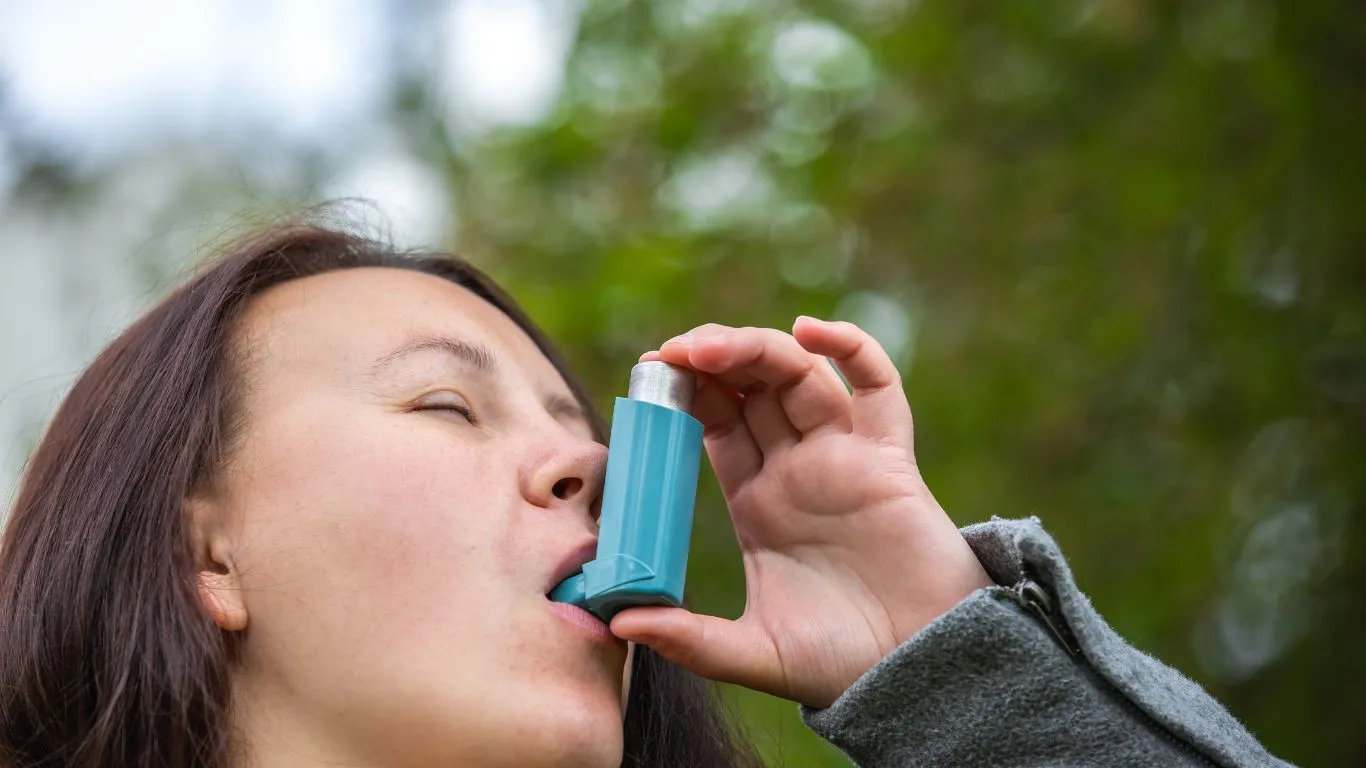Best Humidifier Settings for Asthma Sufferers: Optimal Moisture for Relief
If you’re an asthma sufferer, you probably already know how much the air around you can affect your breathing. One of the easiest ways to create a more comfortable environment is by using a humidifier. But did you know that using the right humidifier settings for asthma sufferers can make a world of difference? Whether you’re dealing with dry air in the winter or living in a dry climate, adjusting your humidifier to the optimal settings can improve your quality of life and reduce asthma flare-ups. In this article, we’ll dive into the best practices for choosing and adjusting your humidifier for asthma relief, drawing from my personal experiences as a pulmonary nurse.
Why Humidifiers Are Crucial for Asthma Sufferers

If you’re new to humidifiers, or you’re just starting to consider one for asthma management, you may be wondering: why exactly are they so important? As someone who’s worked in pulmonary care, I’ve seen firsthand how humidified air can offer relief for people with asthma. When the air is too dry, your airways can become irritated and lead to coughing, wheezing, or shortness of breath. This can be especially problematic during colder months when the air is drier.
Humidifiers help by adding moisture to the air, making it easier to breathe. The added moisture soothes your respiratory tract and reduces irritation. Not only does this make the air more comfortable, but it also helps keep your airways open, reducing the likelihood of asthma attacks. But like any tool, humidifiers work best when used correctly. The right settings can make all the difference, so let’s talk about what those are.
Setting Up Your Humidifier: Finding the Sweet Spot

Now, let’s get into the nitty-gritty of how to adjust your humidifier to best support your asthma management. Setting the right humidity level in your home is key, and it’s something I emphasize with all my patients. Too much humidity can actually be harmful, leading to mold growth and dust mites, which are triggers for asthma. But too little moisture can leave your airways dry and more prone to irritation. So, how do you find the perfect balance?
The Ideal Humidity Level
According to experts, the ideal humidity level for asthma sufferers falls between 30% and 50%. Keeping it in this range will ensure that the air isn’t too dry, while also preventing the environment from becoming too humid. I recommend using a hygrometer (a little device that measures humidity) to track the levels in your room. It’s a simple but effective way to avoid problems like mold or mildew while ensuring you’re getting the most out of your humidifier.
Why Humidity Matters for Asthma
When the air is too dry, it can dry out the mucus membranes in your respiratory system. This increases inflammation, which can lead to difficulty breathing and trigger asthma symptoms. On the flip side, if the air is too moist, it can create an environment where allergens like mold, dust mites, and bacteria thrive. And trust me, as someone who’s worked closely with asthma patients, those triggers are the last thing you want in your home.
Choosing the Right Type of Humidifier

Once you’ve got the ideal humidity range in mind, it’s time to consider what kind of humidifier you should get. There are several types of humidifiers available, and each has its pros and cons depending on your specific needs and your asthma triggers. In my experience, the best humidifier settings for asthma sufferers depend a lot on the type of humidifier you choose.
Evaporative Humidifiers
Evaporative humidifiers are one of the most common and affordable options. They work by using a fan to blow air through a wet wick, evaporating water into the air. These types of humidifiers are ideal for asthma sufferers because they typically maintain a safe level of humidity, making it harder to accidentally over-humidify the room. Plus, since they rely on a fan, they can help circulate the air in your room, preventing areas from becoming too damp.
Ultrasonic Humidifiers
If you prefer a quieter option, ultrasonic humidifiers might be the right choice. These use ultrasonic vibrations to turn water into a fine mist. While they’re super quiet and efficient, they can sometimes add moisture to the air more quickly than an evaporative model. So, it’s crucial to keep an eye on the humidity level in your room to make sure it doesn’t get too high. Ultrasonic models are generally safe but can sometimes produce a little white dust if not maintained properly.
Central Humidifiers
For those who want to take a more whole-house approach, central humidifiers can be a great solution. These systems are built into your home’s HVAC system and can regulate the humidity throughout your entire home. However, they tend to be more expensive and may require professional installation. In my experience, these are great for people who want consistent humidity levels across multiple rooms.
Additional Tips for Using a Humidifier Effectively
Now that we’ve covered the basics of choosing the right humidifier and settings, here are a few tips that can help you get the most out of your device and maintain your asthma management routine:
- Clean your humidifier regularly: Over time, humidifiers can collect bacteria and mold if not cleaned properly. Make sure to follow the manufacturer’s instructions and clean your device at least once a week, especially if you use it every day.
- Use distilled or demineralized water: This prevents the buildup of minerals in the tank, which can lead to bacteria growth and other issues.
- Keep the room well-ventilated: While you want to keep the air humidified, it’s also important to ensure that your room has enough airflow. A stuffy, overly humid room can lead to other respiratory issues.
By following these guidelines and adjusting your humidifier settings for your specific needs, you can create a more comfortable living environment and reduce asthma-related discomfort.
Maintaining Your Humidifier for Optimal Performance

Now that we’ve talked about how to choose and set up your humidifier for asthma relief, let’s dive into how to maintain it for long-term use. A well-maintained humidifier will not only perform better but will also help prevent any issues that could trigger asthma symptoms. Trust me, after working with so many patients over the years, I’ve seen how neglecting maintenance can lead to a whole host of problems, from increased allergens to even mold growth in the humidifier itself. So, let’s make sure you’re keeping yours in top shape!
Regular Cleaning Is Key
One of the biggest mistakes people make with their humidifiers is not cleaning them often enough. I know it can be easy to forget, especially if the humidifier is running quietly in the background. But if you let it go too long without a good cleaning, you’re basically just circulating germs and dust into the air. A buildup of bacteria and mold can trigger asthma flare-ups, and the last thing you want is to turn on your humidifier and inhale something harmful.
I recommend cleaning your humidifier at least once a week if you’re using it regularly. For many models, a simple rinse and wipe down with mild soap and water are enough. Be sure to also replace the water regularly—don’t let it sit stagnant for too long. A good rule of thumb is to empty and refill the tank daily, especially if you’re using it in a high-humidity environment.
Disinfecting for a Fresh, Clean Start
Every few weeks, it’s a good idea to give your humidifier a deep clean. This is especially important if you live in a humid climate or use your humidifier every night. For a deep clean, you can soak the tank in a vinegar-water solution (about 1 part vinegar to 1 part water). This helps to break down mineral deposits and kill any bacteria or mold that might be growing. After soaking, rinse the tank thoroughly with clean water to remove any vinegar residue.
Also, don’t forget about the filter (if your humidifier has one). Filters can trap dirt, dust, and allergens, which could make your asthma worse if they’re left unchecked. Follow the manufacturer’s guidelines for replacing filters, and if the filter is washable, be sure to give it a good rinse every week.
Setting Humidifier Preferences for Different Seasons

Another thing to keep in mind is adjusting your humidifier settings based on the season. The air quality changes with the weather, and so should your humidifier settings. I’ve personally found that tweaking the humidity level based on the time of year can have a huge impact on comfort levels and asthma control.
Winter: Combatting Dry, Cold Air
In the winter, the air tends to be much drier, and your indoor heating systems can make it even worse. Dry air can cause your asthma symptoms to flare up by drying out your airways and increasing irritation. That’s where your humidifier comes in! During the colder months, you’ll want to set your humidifier to a higher level, closer to that 50% mark (but not exceeding it!). This will help keep your airways moist and reduce irritation caused by dry air.
In winter, you also need to be extra vigilant about keeping your humidifier clean. The dry air can lead to a quicker buildup of dust and debris, and because the air is so dry, you might notice your humidifier is working overtime. So make sure to check the tank more frequently and clean it regularly to keep things running smoothly.
Summer: When Humidity Can Be a Problem
In the warmer months, the air often has more moisture, which can actually make asthma symptoms worse if there’s too much humidity in the air. Excess humidity can promote the growth of mold and dust mites—two of the biggest asthma triggers out there. In these cases, it’s important to use your humidifier with caution.
During the summer, you may not need to run your humidifier at all or only use it sparingly in certain rooms. If you do use it, keep the humidity level closer to the lower end of the spectrum (around 30%). And make sure your room is well-ventilated to avoid any excess moisture buildup. In these months, I also recommend using a dehumidifier in the areas of your home where moisture tends to collect, like the basement or bathroom.
Humidifier Settings for Sleep: Creating the Perfect Environment

If you’re using a humidifier while you sleep (and I highly recommend it if you’re an asthma sufferer), there are a few specific adjustments you can make to optimize your breathing at night. Sleep can be one of the trickiest times for asthma sufferers, as allergens and dry air can wreak havoc when you’re lying down for hours at a time.
Nighttime Humidity Preferences
When you’re sleeping, your breathing can become more shallow, and any irritation in the airways tends to feel more pronounced. Keeping the room at a comfortable, slightly higher humidity level (around 45-50%) can make it easier to breathe at night. This is especially important if you wake up with a dry throat, cough, or wheeze. A humidifier running while you sleep will keep your airways moist and reduce the likelihood of these discomforts.
Also, consider the location of your humidifier. If you place it too close to your bed, it may create a damp environment, but if it’s too far away, the moisture may not reach you. Try to place it in a central location in the room to ensure even distribution. If you’re worried about noise, look for a quieter model, as some ultrasonic humidifiers are nearly silent. This way, you won’t be disturbed while getting the asthma relief you need.
Using Essential Oils with Your Humidifier
Some people like to add a few drops of essential oils like eucalyptus or lavender to their humidifiers for an extra boost of relaxation and asthma relief. While essential oils can have soothing effects, be cautious. Not all humidifiers are designed to handle oils, and in some cases, they can cause buildup in the tank or clogging. If you’re using essential oils, make sure your humidifier is compatible, and always check the manufacturer’s instructions. Additionally, I recommend using essential oils sparingly to avoid overwhelming your respiratory system with too much fragrance, which could have the opposite effect and trigger asthma symptoms.
Additional Considerations for Asthma Sufferers When Using a Humidifier

By now, you’ve got a solid understanding of how to set up and maintain your humidifier, adjust it for different seasons, and create a sleep-friendly environment. But there are still a few other things to consider when incorporating a humidifier into your asthma management plan. As someone who’s worked in the pulmonary field for a long time, I’ve learned that managing asthma is about balancing multiple factors, not just relying on one device. Let’s go over some of the final considerations you should keep in mind when using a humidifier for asthma relief.
Watch Out for Allergens in the Air
Even with the best humidifier settings, allergens in your environment can still trigger asthma symptoms. The air around us is filled with potential triggers like pollen, pet dander, dust mites, and mold. Humidifiers can help alleviate some of the irritation caused by dry air, but they won’t remove these allergens from the environment. That’s where an air purifier can be a great addition to your asthma management routine.
Air purifiers are specifically designed to filter out allergens, bacteria, and dust particles from the air. Combining a humidifier with an air purifier can create a more asthma-friendly environment in your home. I’ve recommended this combination to many patients, and it’s something I highly recommend if you’re dealing with persistent asthma symptoms or allergic reactions. It’s not just about moisture; it’s about purifying the air you breathe too.
Temperature Matters: Keep Your Environment Comfortable
Another key factor to consider when managing asthma with a humidifier is the room temperature. Asthma can often be triggered by sudden changes in temperature, especially when it’s too hot or too cold. Humidifiers can help control the air moisture, but if the temperature in your room fluctuates dramatically, you might still face breathing difficulties.
Ideally, you should aim to keep your room temperature stable and comfortable—generally between 60°F and 72°F (about 16°C to 22°C). If you’re running your humidifier in colder weather, make sure the room is warm enough to prevent your lungs from reacting to the cold air. If the room is too hot, it might make breathing more difficult as well, particularly if there’s excess moisture in the air.
When Should You Stop Using a Humidifier?

While humidifiers can be a huge help in managing asthma symptoms, there are times when they might not be the best option. As with any treatment, it’s important to listen to your body and adjust accordingly. In some cases, using a humidifier might actually make things worse if you don’t stay on top of maintenance or if your room becomes too damp. Here are a few signs to look out for:
- Excessive humidity: If your hygrometer reads above 50% consistently, it may be time to adjust the humidifier down or even turn it off temporarily. Too much humidity can lead to mold and mildew growth, which are both serious asthma triggers.
- Frequent coughing or wheezing: If you notice that your asthma symptoms are worsening despite using the humidifier, it might be a sign that the room is too humid or that the humidifier needs cleaning. In this case, try turning it off for a bit and see if the symptoms improve.
- Mold or musty smells: If you smell mold or mildew coming from the humidifier, it’s a clear indication that something isn’t right. You should stop using it until it’s cleaned properly, and it may be time to check your humidity levels to avoid creating a breeding ground for allergens.
Other Times to Consider Stopping Use
Aside from the technical factors, you might also want to stop using your humidifier during certain times, like during extreme heat or when you have respiratory infections. While a humidifier can help soothe dry airways, it won’t help with an infection or illness that requires medical attention. In those cases, it’s important to consult with your healthcare provider about the best treatment options.
References
If you want to dive deeper into the relationship between asthma and humidity or need more detailed information on how to optimize your asthma management, here are some helpful resources:
- Google Health – Search for studies and expert opinions on asthma management.
- Mayo Clinic – Offers reliable medical advice on asthma and air quality management.
- Asthma and Allergy Foundation of America – Comprehensive guide to asthma triggers and treatment.
Feel free to explore these references for more in-depth insights on managing asthma symptoms with a humidifier and making the most out of your asthma treatment plan.
Disclaimer
The information in this article is for informational purposes only and is not intended as medical advice. Always consult with a healthcare professional before making any changes to your asthma management routine. The author is a pulmonary nurse with experience in asthma care, but individual needs may vary. If you are experiencing severe asthma symptoms, please seek medical attention.

Bianca Nala is a compassionate Nurse Practitioner with a strong background in primary and respiratory care. As a health writer for Healthusias.com, she combines her clinical expertise with a talent for clear, relatable storytelling to help readers better understand their health. Bianca focuses on topics like asthma, COPD, chronic cough, and overall lung health, aiming to simplify complex medical topics without losing accuracy. Whether she’s treating patients or writing articles, Bianca is driven by a single goal: making quality healthcare knowledge accessible to everyone.






